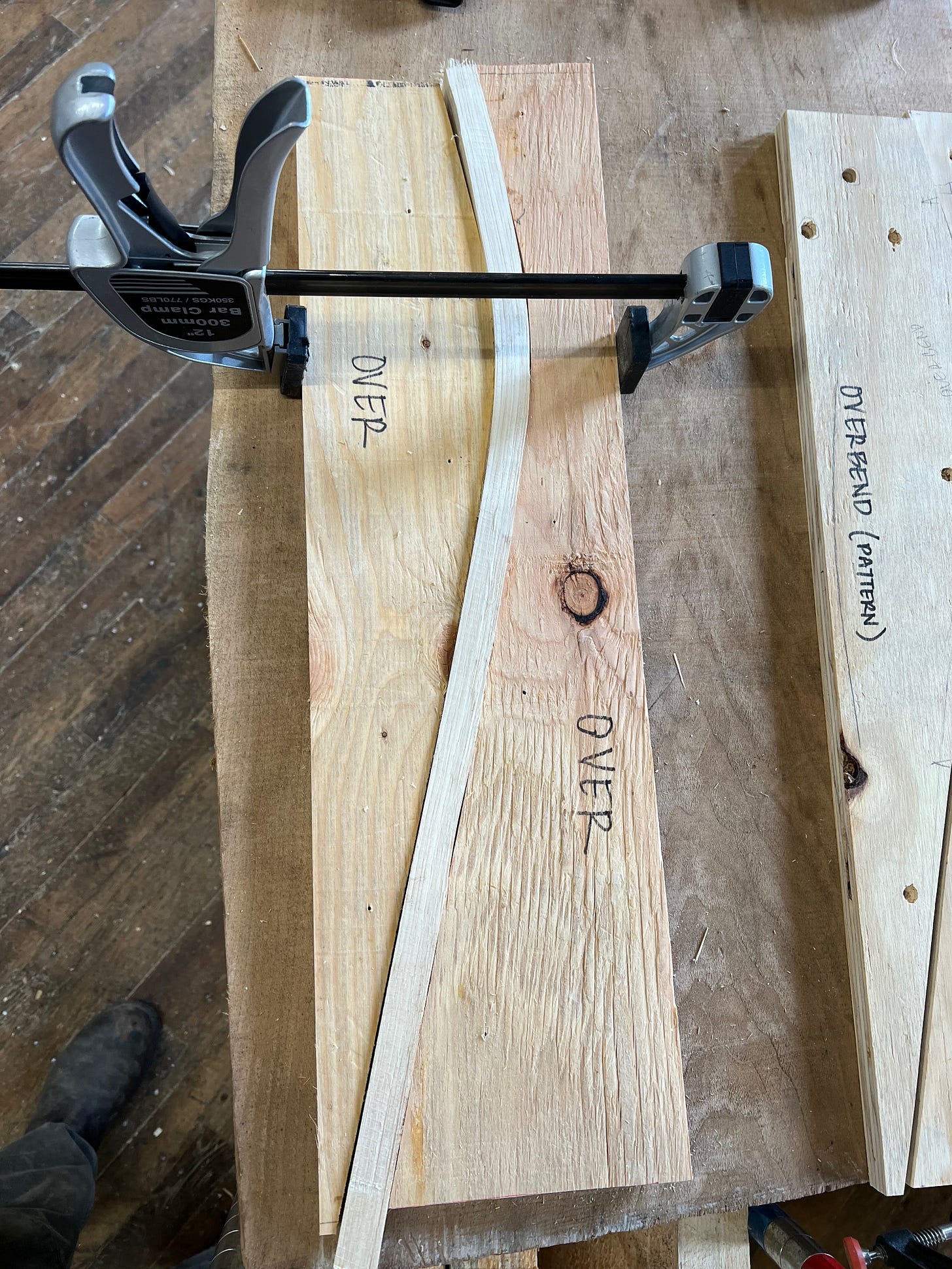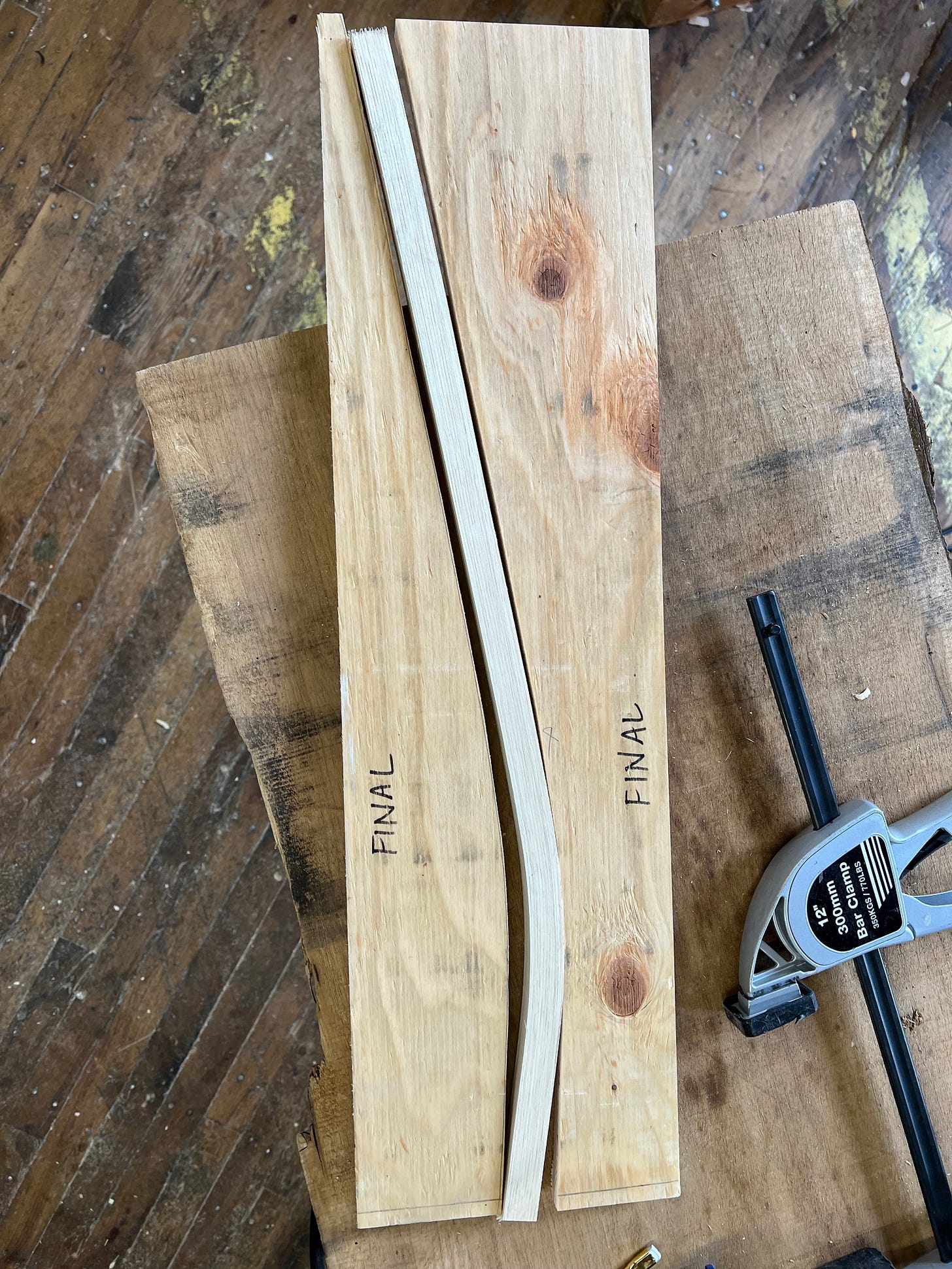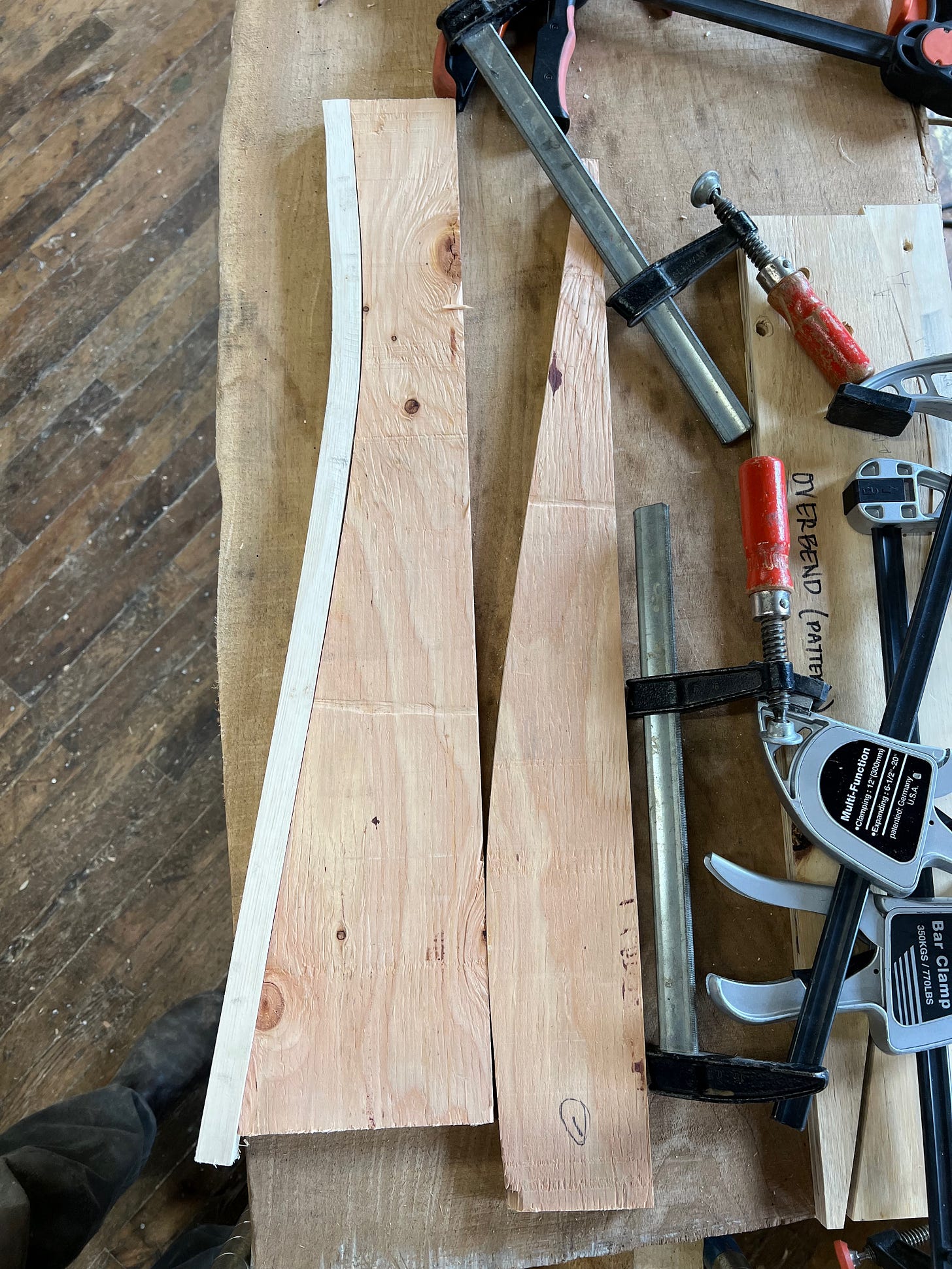I had a good day in the shop. Nothing huge happened, no eureka moment or great achievement. I spent the earlier part of the day working with Aspen on our bench project. There has been lots of discussion and discovery, but today, we both put our heads down and just did some labor. If I’m being honest, I’ve been struggling to enjoy working in my old shop. Lately, I’ve been pulled in so many directions that I haven’t been getting those extended periods of quietly going about my woodworking. I’ve been reassuring myself that the new workshop will be a wonderful place, and I have been enjoying the progress in it’s construction. But lacking the time to be “in the zone” has made it difficult to maintain my awareness of the actual impact it will have in my working life. After Aspen and I finished, I drove Georgia home so she could get some rest and went back to the shop to get some more work done. Those few hours of quietly turning and gluing up a seat blank reminded me why it’s all so very worth it. Nearly 30 years in and I was happily reminded that I still love the work.
The other memory I’m thinking about is in the wood, specifically when bending it. For our bench, we want very consistent bends. The spindles will be seen in aligning in long spans and we don’t want wonky shapes to be a distraction. We batted around a few ideas and settled on using two sided forms, bending the parts in square even cross section and doing the final shaping once they’ve dried. Getting a bend to hold a specific shape isn’t that difficult, especially if you use heat and time to set the bend. We have 60 something spindles to “set” so we wanted a way to move through the process quickly and with dead on consistency. Ours solution is to overbend the spindles in a specially made form, let them cool and then put them in the form with the final shape. By overbending, we sort of implant a false memory, so when the part goes into the final form, it’s actually straightening. This also works great when bending subtle curves or trying to make shaved parts dead straight. In those situations, the pressure on the piece isn’t enough to shift the fibers to a hold a new shape. Wiping the “memory” by putting the part into a bend far beyond the desired result and then into the final shape does the trick. This is referred to as “limbering”.
Here is the overbend form with the bent spindles
Before I clamped it in this position, I put the straight section of the spindle in the area of the curve and clamped it for a few seconds to limber it, then when I shifted the part and clamped it in it’s final position, that area got pressed straight by the form.
Above you can see how the part, once cooled, compares to the final bending form. The form is “opening” the bend from top to bottom. Below is a part that went through this process and sat overnight in the form. It holds to the shape beautifully, even though it isn’t even dry yet.
When using two sides forms like these, I like to pass the spindles through my planer to ensure full contact. I shave the spindles as usual, then skim one side in the planer and flip faces until both are shaved cleanly and the thickness is correct. The beauty of planers is that they don’t flatten, so the parts come out still following the fibers, just evenly thicknessed. If you are concerned about wet wood in your planer (you probably should be), just let them air dry for a few days, they’ll hold the bends better without all that water in the cells anyway. Tomorrow promises to be another good shop day, lots of spindles to bend and I get to make bending forms for the posts, more on that later…







You give so much to us. I am so glad the work is still giving to you!